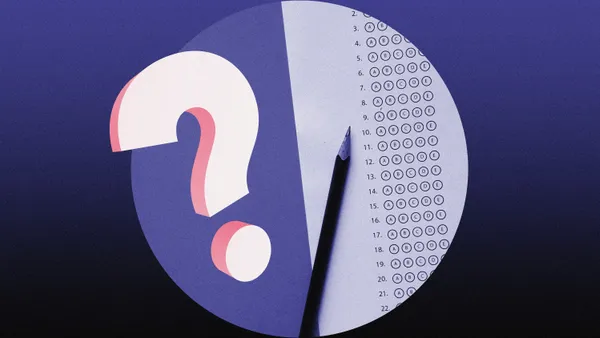Dive Brief:
- An innovative staffing model in Arizona allows several teachers to work together across multiple learning spaces within a school rather than relying on one teacher to instruct a classroom — and it’s showing promising outcomes for teacher retention, according to a study released Monday by researchers from Arizona State University and the University of Pennsylvania.
- Teachers who worked under the newer team model, known as Next Education Workforce, were notably less likely to leave their jobs compared to educators teaching in traditional classrooms, the study found. For instance, the predicted turnover rate for NEW teachers was nearly 12%, compared to 21% of non-NEW teachers and 16% of all teachers nationwide.
- The NEW model’s early signs of success in retaining educators comes at a time when teacher turnover is a leading factor for districts’ teacher shortages, particularly for math and science instruction as well as teachers of color, the study’s authors wrote.
Dive Insight:
The NEW model taps into a team-based staffing model where an average of four to five teachers collectively take responsibility for at least 100 students depending on the grade level.
Over 150 schools across six school districts in several states, including Arizona and California, have partnered with Arizona State University to implement the NEW model since 2018. The research examining the NEW model was conducted in partnership with the Center on Reinventing Public Education, a research organization at ASU’s Mary Lou Fulton College for Teaching and Learning Innovation.
Some key elements of the NEW model include providing each student rigorous learning opportunities, allowing teachers to tap into team planning time, moving across shared instructional spaces, and differentiating each teacher’s roles and responsibilities on the team.
“The aim of the NEW model is to make deeper, personalized student-centered teaching and learning possible and sustainable,” the study’s authors wrote. “The ultimate goal is to improve the performance, job satisfaction, and retention of teachers and, in turn, student motivation and learning.”
The research on this alternative staffing model was released the same week that a RAND Corp. report revealed that teachers continue to be more likely than similar working adults to report poor well-being across every indicator measured by the researchers.
Still, the number of teachers who said they intend to leave their job dropped from 22% to 16% between 2024 and 2025, RAND found. Black teachers, however, reported higher rates of intending to quit than White teachers in 2025. Both findings reflect trends that have developed in recent years, according to RAND.
The lower rates of teacher turnover from the NEW staffing model could ultimately lead to cost savings for districts down the road, the ASU and U-Penn study said. But more cost-savings analysis on the NEW model is needed, the authors wrote, as the team-based teacher approach can also incur some additional costs for districts.
“The old single teacher classroom model is conducted in isolation from colleagues, which creates a ‘sink or swim’ approach that is particularly hard on new teachers - who depart the profession in costly numbers in their early years,” said Richard Ingersoll, a professor of education and sociology at the University of Pennsylvania Graduate School of Education and a researcher on the NEW model study, in a Monday statement.
“This re-thinking of the classroom model shows enormous promise for teachers and students alike.”








 Dive Awards
Dive Awards







